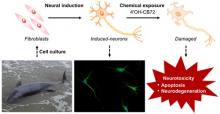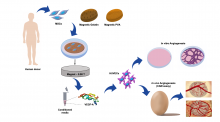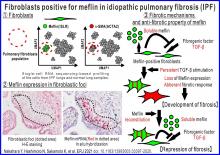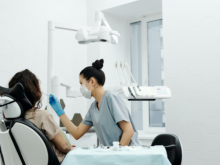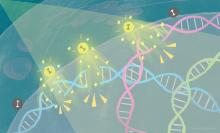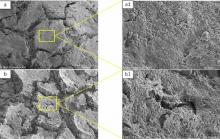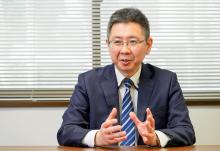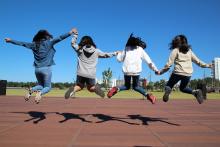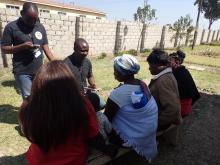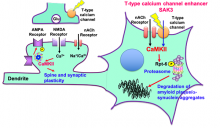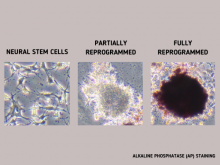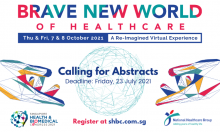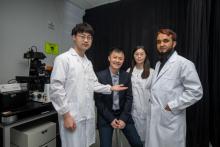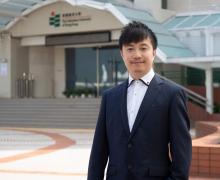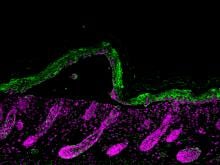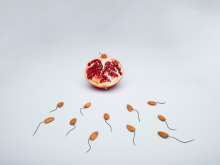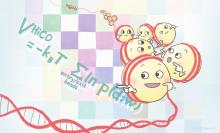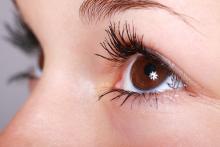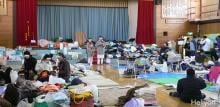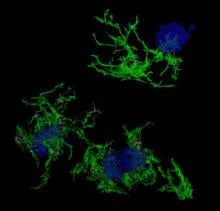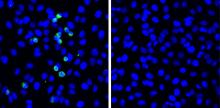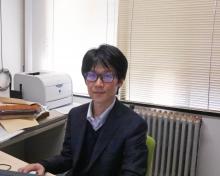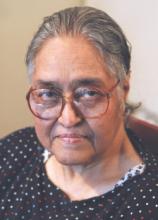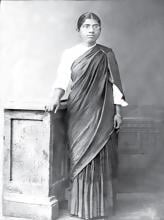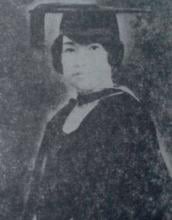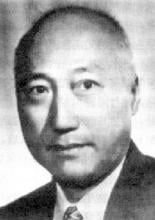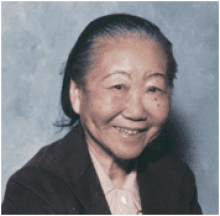Health
News
26 Jul 2021
Using neurons directly reprogrammed from tissues of stranded whales to assess brain health
A research team of the Center for Marine Environmental Studies (CMES) of Ehime University, Japan succeeded for the first time in direct reprogramming of whale somatic cells to neuronal cells, and conducted a neurotoxicity test using these cells. Exposure to a metabolite (4′OH-CB72) of polychlorinated biphenyls, ubiquitous environmental pollutants, caused apoptosis in the reprogrammed neurons. Transcriptome analysis of 4′OH-CB72-treated whale neurons showed altered expressions of genes associated with oxidative phosphorylation, chromatin degradation, axonal transport, and neurodegenerative diseases.
21 Jul 2021
Magnetic field could boost blood vessel growth to regenerate damaged tissue.
19 Jul 2021
A subset of fibroblasts located in small foci of tissue on the edges of extensive scarring produce a protein that protects against cell aging.
15 Jul 2021
A study showed braces that give our smiles a makeover could also transform oral microflora to a pre-gum disease state. Now scientists plan to use their findings to prevent this from happening.
14 Jul 2021
Researchers have found a way to enhance radiation therapy using novel iodine nanoparticles.
13 Jul 2021
Researchers from Osaka City University show the benefits of mixing alginic acid with calcium phosphate cement (CPC), a common bone replacement material, with in vitro and in vivo studies. The biopolymer is shown to improve the setting time and compressive strength of CPC, as well as help it acquire porosity – which allows cells to enter the defected area and grow new bone.
08 Jul 2021
Our brain has no lymphatic system; however, it does have fluid flow, which is believed to play a role in removing waste from the brain. However, the fluid's point of origin and fluid flow is still unclear. The “multi-scale stable isotopes imaging” project in Hokkaido University aims to solve this mystery using advanced technology.
“We would not have been able to perform this study without Hokkaido University’s MRI technology and the isotope microscope,” said the project’s PI, Professor Kohsuke Kudo of the Department of Radiology, Faculty of Medicine.

08 Jul 2021
ARN's July newsletter features research about a promising treatment candidate to reverse dementia, a newly discovered climate pattern, using starch in tiny energy devices, exploring earth Earth ecosystems and the photo of the month.
07 Jul 2021
Lonely older adults live at least three fewer years, in poorer health, and are less active than non-lonely peers, say ageing research experts.
05 Jul 2021
Researchers analyze bone marrow-derived and peripheral blood-derived fibrin clots showing that the former contains more growth factors. They then show that bone marrow-derived fibrin clots can be used for meniscus suturing, even in the inner-most avascular regions, and with a 2-year post-operative follow-up, they show bone marrow-derived fibrin clots support healing better than their peripheral blood counterparts.
30 Jun 2021
Japanese and Zambian scientists have shown that environmental lead poisoning in children affects not only their own health and wellbeing, but the vitality and mental health of their mothers, as well.
29 Jun 2021
Researchers have identified a new treatment candidate that appears to not only halt neurodegenerative symptoms in mouse models of dementia and Alzheimer’s disease, but also reverse the effects of the disorders. The treatment candidate has been declared safe by Japan’s governing board, and the researchers plan to begin clinical trials in humans in the next year.
28 Jun 2021
A new non-invasive technique scans “chemical fingerprints” to see if ordinary cells’ reprogramming into stem cells is on track and verify transformation success by matching “print” patterns.
25 Jun 2021
The inaugural virtual edition of Singapore Health and Biomedical Congress will be held on 7 & 8 October 2021. Register and submit abstracts now.
24 Jun 2021
It is generally agreed that sperms “swim” by beating or rotating their soft tails. However, a research team led by scientists from City University of Hong Kong (CityU) has discovered that ray sperms move by rotating both the tail and the head. The team further investigated the motion pattern and demonstrated it with a robot. Their study has expanded the knowledge on the microorganisms’ motion and provided inspiration for robot engineering design.
23 Jun 2021
Productive ageing is an internationally clear direction of social policy development. A recent survey conducted by the Institute of Policy Studies (IPS) of Lingnan University (LU) in Hong Kong confirmed that an age-friendly city framework would help to promote the productive engagement of older adults in Hong Kong. The research team recommended that the Hong Kong Government to enact policies and programmes improving intergenerational communication and interaction, promoting inclusivity to address ageism for positive engagement leading to healthy and productive ageing.
23 Jun 2021
Urbanisation, technological advances, and increasing convenience in everyday life have restricted the amount of physical exercise most people engage in, resulting in a major public health concern. This persistent and growing health-related problem calls for an acute need to develop an intervention programme that can effectively promote physical activities, not only at individual level but also at the family, community, and citywide levels.
22 Jun 2021
- CTCELLS Co., Ltd., Selected for '200 Baby Unicorns' Organized by MSS & KISED
- Successfully Attracts 5 Billion Won Investment through Series A Investment Attraction
18 Jun 2021
A signalling protein thought to be able to treat liver damage in paracetamol toxicity could actually worsen it. Instead, Singapore scientists discovered, blocking its effects could be the way forward.

15 Jun 2021
This is an opinion piece by Associate Professor Dr Loh Siew Yim (Malaysia), Dr Gail Boniface (UK), Professor Sharon Britnell (Canada).
14 Jun 2021
A team of scientists has shown that the healing of skin blisters is driven by hair follicle stem cells, which delay their own development in the process.
07 Jun 2021
The chances of restoring fertility through sperm stem cell transplant are as random as a coin toss. But a team of scientists developed a new strategy that serves as a “weighted coin” that can favorably rig the odds to achieve outcomes where fertility is successfully restored.
04 Jun 2021
Researchers from Osaka City University find that when the larva nematode C. elegans is fed a diet of Bacillus subtilis var. natto, a bacteria used to ferment soy beans into the traditional Japanese food natto, upon reaching adulthood these worms are able to survive infections from the gram-positive bacteria Staphylococcus aureus and Enterococcus faecalis longer than when fed a standard diet of non-pathogenic E. coli.
31 May 2021
High-resolution genome structural analyses combined with large-scale simulations show the arrangements of the genome’s spool-like structures affecting gene expression.
27 May 2021
Researchers at The International Islamic University Malaysia (IIUM) have developed an algorithmic approach to predict progression of a condition called pterygium, which involves abnormal tissue growth across the eye.
24 May 2021
The devastating Great East Japan Earthquake on March 11, 2011 displaced some 500,000 people to evacuation shelters. A research team that conducted regular visits to shelters to assess their status and inhabitants well-being have analyzed their data and found that about half of shelters had inadequate clean tap water and toilets, leading to worsening health outcomes for inhabitants.
21 May 2021
Single-cell gene studies are clarifying the roles of the brain’s specialised immune cell in Alzheimer’s disease and offer new avenues for treatment of this incurable condition.
21 May 2021
Scientists from Hokkaido University have discovered a novel defensive response to SARS-CoV-2 that involves the viral pattern recognition receptor RIG-I. Upregulating expression of this protein could strengthen the immune response in COPD patients.
19 May 2021
Scientists from Hokkaido University have shown that an antigen-based test for quantifying SARS-CoV-2 in saliva samples is simple, rapid, and more conducive for mass-screening.
19 May 2021
Dr. Kazuhiro Ohtani is a certified public psychologist and a lecturer at Hokkaido University’s Graduate School of Education. His main research interest is the academic motivations of Japanese students, especially adolescents. He believes that children in the age range of puberty are more prone to depression, which often leads to the loss of academic motivation.
Events
Sorry, no events coming up for this topic.
Researchers
Sorry, no researchers coming up for this topic.
- « first
- ‹ previous
- 1
- 2
- 3
- 4
Giants in history
Chinese biochemist Chi Che Wang (1894 - 1979), one of the first Chinese women to study abroad, advanced to prominent research positions at American institutions including the University of Chicago and the Northwestern University Medical School.
Ruby Sakae Hirose (1904 – 1960) was a Japanese-American scientist whose research contributed significantly to our understanding of blood clotting, allergies and cancer.
Flora Zaibun Majid ( 1939–2018) was an accomplished Bangladeshi researcher in botany and nutrition science and the first female chairperson of the Bangladesh Council of Scientific and Industrial Research.
Iranian physician and bacteriologist Azar Andami (8 December 1926 – 19 August 1984) developed a cholera vaccine to combat an outbreak that swept through the Middle East, India, Southeast Asia, and Africa in 1937.
Irene Ayako Uchida’s (8 April 1917 – 30 July 2013) strides to understand genetic diseases such as Down syndrome paved the way for early screening of chromosomal abnormalities in foetuses.
Baron Kitasato Shibasaburo (29 January 1856 – 13 June 1931) was a Japanese physician and bacteriologist whose work led to a new understanding of preventing and treating tetanus, diphtheria and anthrax.
Maggie Lim (5 January 1913 – November 1995) was a Singaporean physician who promoted family planning and expanded the access to clinics to improve the quality of life for mothers and children in Singapore’s early days.
By isolating soil microorganisms and studying the compounds they produce, Satoshi Omura (born 1935) discovered almost 500 organic compounds with unique properties that were produced by these microorganisms, including many new antibiotics.
The founder of the Adyar Cancer Institute in India, Muthulakshmi Reddy (30 July 1886 – 22 July 1968), fought to uplift women and girls from impoverished situations.
Chinese-American virologist and molecular biologist Flossie Wong-Staal (27 August 1946 – 8 July 2020) was the first scientist to clone HIV and determine the function of its genes.
Maharani Chakravorty (1937 – 2015) was one of India’s earliest molecular biologists whose research paved the way for advances in the treatment of bacterial and viral infections.
Archana Sharma (16 February 1932 - 14 January 2008) conducted research into plant and human genetics that expanded the understanding of both botany and human health. In relation to botany, she uncovered the means by which asexually-reproducing plants evolve into new species.
The first Thai woman to receive a degree in medicine, Margaret Lin Xavier (29 May 1898 – 6 December 1932), is best remembered for her compassion towards her less privileged patients.
In 1915, pathologist Katsusaburo Yamagiwa and his research assistant Koichi Ichikawa became the first to prove that chronic exposure to chemicals can cause cancer.
Filipino chemist and pharmacist Manuel A. Zamora (29 March 1870 – 9 July 1929) is best remembered for his discovery of the tiki-tiki formula to combat beriberi, a disease caused by Vitamin B1 deficiency.
After witnessing death and suffering as a youth in his home village during World War II, Nguyễn Tài Thu (6 April 1931 – 14 February 2021) set his sights on alleviating pain by becoming a doctor. After studying Traditional Chinese Medicine in China in the 1950s, Thu returned to Vietnam to serve in military hospitals. Eventually, he became the country’s foremost practitioner of acupuncture, a technique he first learned by inserting needles into himself.
David T. Wong (born 1936) is a Hong Kong-born American neuroscientist who is best known for discovering the antidepressant drug fluoxetine, better known as Prozac.
Indian organic chemist Asima Chatterjee (1917 to 2006) studied the medicinal properties of plant products, especially compounds known as vinca alkaloids.
Hsien Wu (24 November 1893 – 8 August 1959) is widely regarded as the founder of biochemistry and nutrition science in China. He was the first to propose that protein denaturation was caused by the unfolding of the protein, instead of chemical alteration.
Umetaro Suzuki (7 April 1874 – 20 September 1943) was a Japanese scientist best remembered for his research on beriberi, a disease caused by vitamin B1 deficiency, characterized by limb stiffness, paralysis and pain.
Syed Qasim Mehdi (13 February 1941 – 28 September 2016) was a Pakistani molecular biologist who was a founding member of the Human Genome Diversity Project (HGDP), which assessed human diversity by studying human migration, mutation rates, relationships between different populations, genes involved in height and selective pressure.
Tsai-Fan Yu (1911 – 2 March 2007) was a Chinese-American physician and researcher who was the first female full professor at Mount Sinai School of Medicine. She discovered that gout, a condition characterized by the painful inflammation of joints, was caused by elevated levels of uric acid in the bloodstream.
Min Chueh Chang (10 October 1908 – 5 June 1991) was a Chinese-American biologist who studied fertilization in mammalian reproduction.
A Japanese surgeon, Tetsuzo Akutsu (20 August 1922 – 9 August 2007) built the first artificial heart capable of keeping an animal alive.
Ogino Ginko (3 March 1851 – 23 June 1913) was the first registered female doctor to practise modern medicine in Japan.


